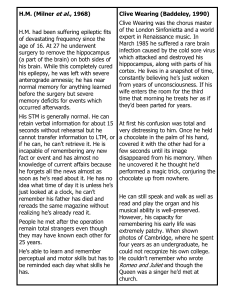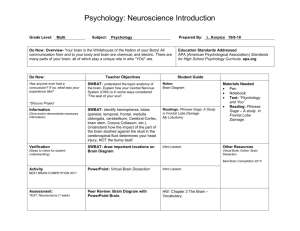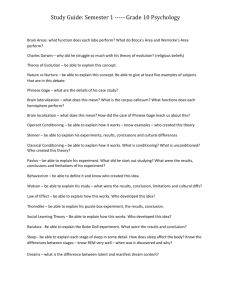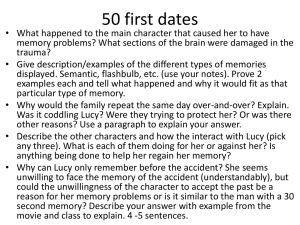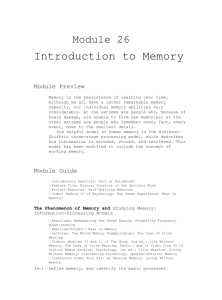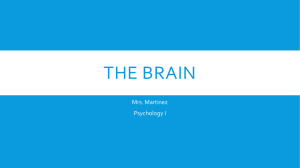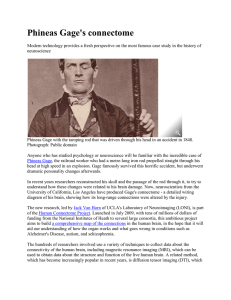Case Studies Carousel
advertisement
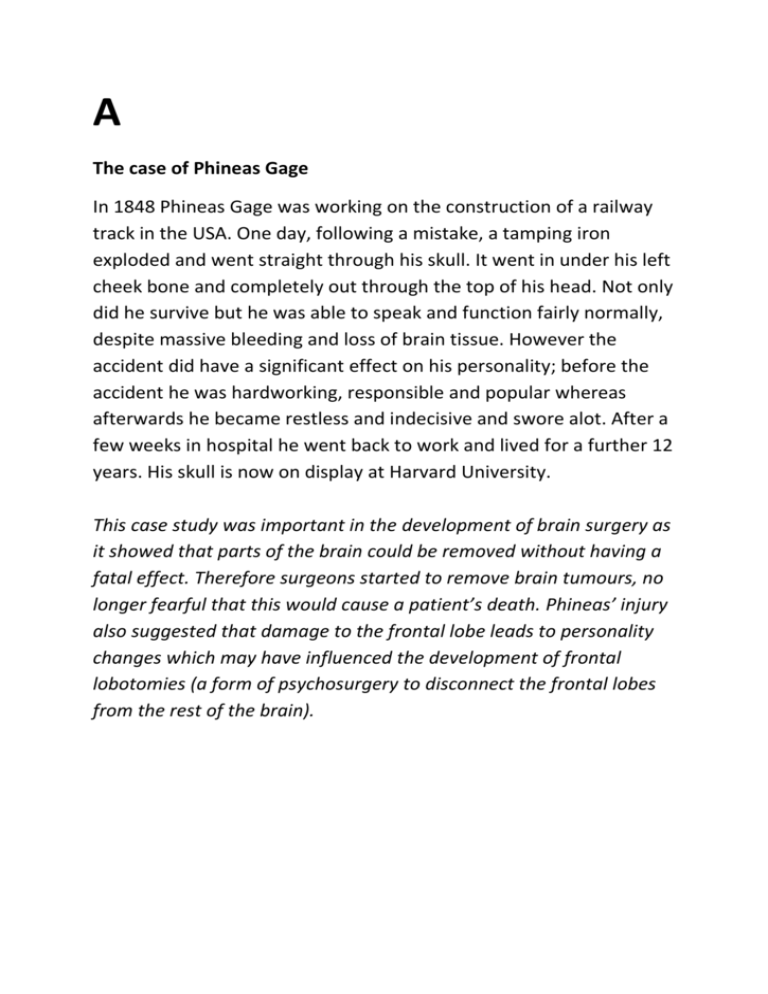
A The case of Phineas Gage In 1848 Phineas Gage was working on the construction of a railway track in the USA. One day, following a mistake, a tamping iron exploded and went straight through his skull. It went in under his left cheek bone and completely out through the top of his head. Not only did he survive but he was able to speak and function fairly normally, despite massive bleeding and loss of brain tissue. However the accident did have a significant effect on his personality; before the accident he was hardworking, responsible and popular whereas afterwards he became restless and indecisive and swore alot. After a few weeks in hospital he went back to work and lived for a further 12 years. His skull is now on display at Harvard University. This case study was important in the development of brain surgery as it showed that parts of the brain could be removed without having a fatal effect. Therefore surgeons started to remove brain tumours, no longer fearful that this would cause a patient’s death. Phineas’ injury also suggested that damage to the frontal lobe leads to personality changes which may have influenced the development of frontal lobotomies (a form of psychosurgery to disconnect the frontal lobes from the rest of the brain). B The case of HM On his 16th birthday, HM experienced his first epileptic fit. For the new few years these fits became progressively worse and uncontrollable by medication. Scoville and Milner (1957) believed that HM’s epilepsy might be cured by removing the parts of his brain thought to be causing the fits. Therefore HM had an operation to remove the hippocampus from both sides of his brain to reduce his severe epilepsy. Following the operation, the effect on HM’s epilepsy was not clear, although there was a slight improvement. However, although HM’s personality and intellect remained intact, HM could not form new long-term memories. For many years after the operation he reported that he was 27 and the year was 1953. He couldn’t memorise lists of words or recall faces of people that he had met. The case study of HM has led to memory research into the different types of memory (procedural and episodic) as well as the brain areas involved in memory. C The case of KF KF (Shallice and Warrington, 1970) suffered brain damage from a motorcycle accident that damaged his short-term memory yet his long-term memory was left intact. He has a digit span of 1 item (i.e. when given a string of 20 numbers to recall in sequence he usually can only remember one of them). This suggests that KF has almost no short-term memory recall and can be used to support the idea that short-term memory and long-term memory are separate memory systems. Therefore if one is damaged it doesn’t necessarily mean that the other is too. D The case of Clive Wearing Baddeley (1990) reported the case of Clive Wearing who contracted a viral infection which attacked his brain, damaging the hippocampus and associated brain areas. Clive lost all of his ability to transfer memories from his short-term memory to his long-term memory. He remembers some aspects of his life before the infection but not others (e.g. he knows that he has children from an earlier marriage but cannot remember their names and he remembers his second wife, Deborah, and greets her joyously every time they meet, believing he has not seen her in years even though she may have just left the room briefly). E The case of Genie Genie had virtually no human contact from birth and was locked away in an empty room by her father until she was 13 ½ (because he thought she was mentally retarded). She was deprived of any stimulation, fed baby-food, slept in a cot, and strapped to a ‘pottychair.’ When she was ‘found’ in November 1970 she could not stand up straight and could not speak. Over time, Genie showed a slight improvement in some areas of development but never fully recovered socially; she apparently showed a disinterest in other people. Researchers have suggested that her lack of recovery may be due to her extreme early privation as she had not been able to form an attachment (Curtiss, 1977). F The case of the Czech Twins Koluchova (1976) reported the case study of the Czech twins, Andrei and Vanya, who spent the first 7 years of their lives locked up by their stepmother (their own mother died when they were infants). When they were first ‘discovered’ they couldn’t talk. They were then fostered and cared for by two loving sisters. By the age of 14 they had near normal intellectual and social functioning. By the age of 20, they were above average intelligence and had excellent relationships with the members of their foster family. It has been suggested that they recovered from early childhood privation as they were found at a young enough age to still form attachments.

